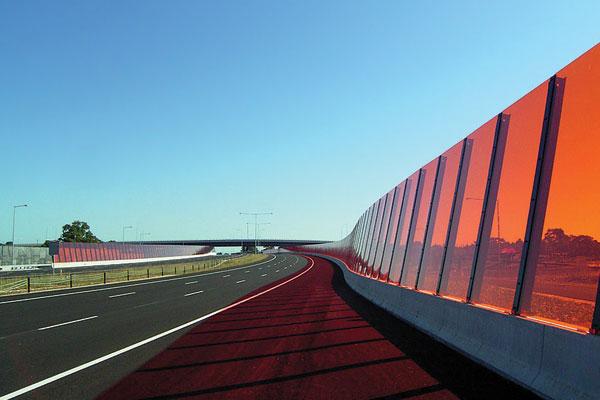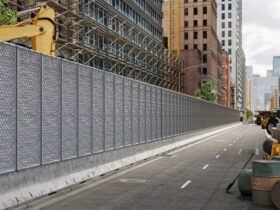Singapore is a city that never really sleeps—and while that’s great for business and public transport, it also means the constant hum of traffic is part of daily life. For many residents living near expressways, MRT tracks, or major arterial roads, traffic noise isn’t just an occasional annoyance—it’s a chronic issue that affects sleep, work, and overall well-being.
So, how does Singapore, one of the most densely populated cities in the world, keep its urban noise levels under control? The answer lies in a combination of smart urban planning, enforcement, and increasingly sound reduction barriers in Singapore.
The Problem: City Traffic and Its Unwelcome Soundtrack
In a compact city-state like Singapore, residential areas often sit very close to major roads. From the Pan Island Expressway (PIE) to the East Coast Parkway (ECP), traffic is nearly constant. Add in buses, lorries, motorbikes, and occasional construction, and you’ve got a 24/7 stream of urban noise.
While Singapore has implemented strict vehicle regulations and sound level standards, some noise exposure is simply unavoidable, especially for residents on lower floors or those facing high-traffic zones.
That’s where sound control solutions come in.
What Are Sound Barriers and How Do They Work?
Sound barriers—also known as noise barriers or acoustic walls—are physical structures built to reduce the amount of traffic noise that reaches nearby buildings. They work by either:
- Blocking sound waves from reaching the receiver (your flat, for example)
- Reflecting noise back toward the source (i.e., the road)
- Or absorbing sound energy into the barrier material itself
In Singapore, these structures are typically installed:
- Along expressways and major roads near HDB blocks
- Around MRT tracks in residential zones
- In areas with schools or hospitals located close to traffic corridors
You’ll recognise them by their distinctive form—tall, often curved walls made from materials like concrete, metal, or acrylic panels. Some are even lined with greenery or incorporate transparent sections to preserve light and views.
The Science Behind the Silence
The effectiveness of a sound barrier depends on several factors:
- Height: The taller the barrier, the more it can block sound waves, especially from heavy vehicles.
- Distance from source and receiver: Ideally, the barrier sits close to the road and relatively far from residential units.
- Material: Dense, non-porous materials reflect or absorb sound better.
- Continuity: Gaps or breaks in the barrier significantly reduce its impact.
In practice, a well-designed noise barrier in Singapore can reduce traffic noise levels by 5 to 15 decibels (dB). That might not sound like much, but since decibels work on a logarithmic scale, even a 10 dB drop can make traffic noise seem about half as loud.
Singapore’s Sound Barrier Strategy
The Land Transport Authority (LTA) has been steadily rolling out noise barriers as part of its Road Noise Management Programme, which started in 2012. This initiative targets:
- Residential blocks located within 30 metres of major expressways
- Areas with high levels of road traffic exceeding acceptable noise thresholds
- Buildings where traditional retrofitting (like double glazing) isn’t practical or sufficient
In recent years, hundreds of HDB blocks across the island have benefitted from the installation of these barriers, especially in areas such as Bukit Batok, Clementi, and Bedok.
The LTA continues to evaluate and expand coverage based on monitoring data, public feedback, and projected traffic increases in certain zones.
Benefits Beyond the Decibels
Sound barriers do more than just reduce noise. In Singapore, they also:
- Improve quality of life: Less noise equals better sleep, lower stress, and improved concentration.
- Enhance property value: Flats facing expressways with noise protection are often more attractive to buyers and renters.
- Support public health: Studies link long-term noise exposure to health issues like hypertension and cardiovascular disease.
- Help maintain community harmony: Reducing ambient noise improves general mood and reduces complaints.
In short, noise management isn’t just a technical issue—it’s a matter of urban liveability.
Challenges and Limitations
Despite their benefits, sound barriers aren’t a silver bullet. They’re:
- Less effective for upper floors (above the 8th or 9th storey), where sound can travel over the top
- Visually intrusive, especially when placed near windows or walkways
- Costly to install and maintain
- Sometimes reflect sound into other areas, depending on the layout and materials used
This is why Singapore often supplements barriers with other strategies, such as:
- Using low-noise road surfacing materials
- Promoting the adoption of electric vehicles to reduce engine sounds
- Mandating acoustic glazing in new developments close to expressways
The government’s multi-pronged approach aims not just to reduce noise, but to design it out of the environment over time.
What Can Residents Do?
If you’re still experiencing high noise levels despite nearby barriers, there are several practical steps you can take:
- Install acoustic window seals or double-glazed windows
Use thick curtains, bookshelves, or fabric panels to absorb internal echoes - Reorient furniture in your flat to create quieter zones away from noise-facing walls
Also, if you’re moving into a new flat, check the URA’s or HDB’s building orientation and noise mitigation features in the area. Some new developments are built with angled layouts or sunshades that also help deflect sound.
Final Thoughts
In a city like Singapore, where urban density is a given and roads are never far away, sound barriers play a vital role in keeping noise pollution in check. They don’t eliminate traffic noise entirely, but when combined with other measures, they create quieter, healthier environments for the millions who live close to the city’s transport arteries.
So next time you pass one of those large walls lining the expressway, know this: they’re not just there for show. They’re helping make urban living just a little bit more bearable—one decibel at a time.












